Garmin Edge bike computers are one of the most popular choices for cyclists to navigate, record their rides and train more scientifically.
Over time, Garmin has upgraded the capabilities of its GPS bike computers. Advanced tech has trickled down to all but its entry-level models.
So what does the Garmin Edge range offer and which head unit is right for you?
Garmin Edge range explained

The Garmin Edge range starts with the basic models that feature a simple black-and-white screen. Moving up the range gets you increasingly larger devices with larger-format colour touchscreens and more training data available. That said, even the base models have a lot of Garmin’s features included.
As well as offering standalone computers, Garmin also sells bundles for each Edge model.
These package up the Edge computer with other kit, such as a sensor bundle, which adds a heart rate monitor strap, and speed and cadence sensors.
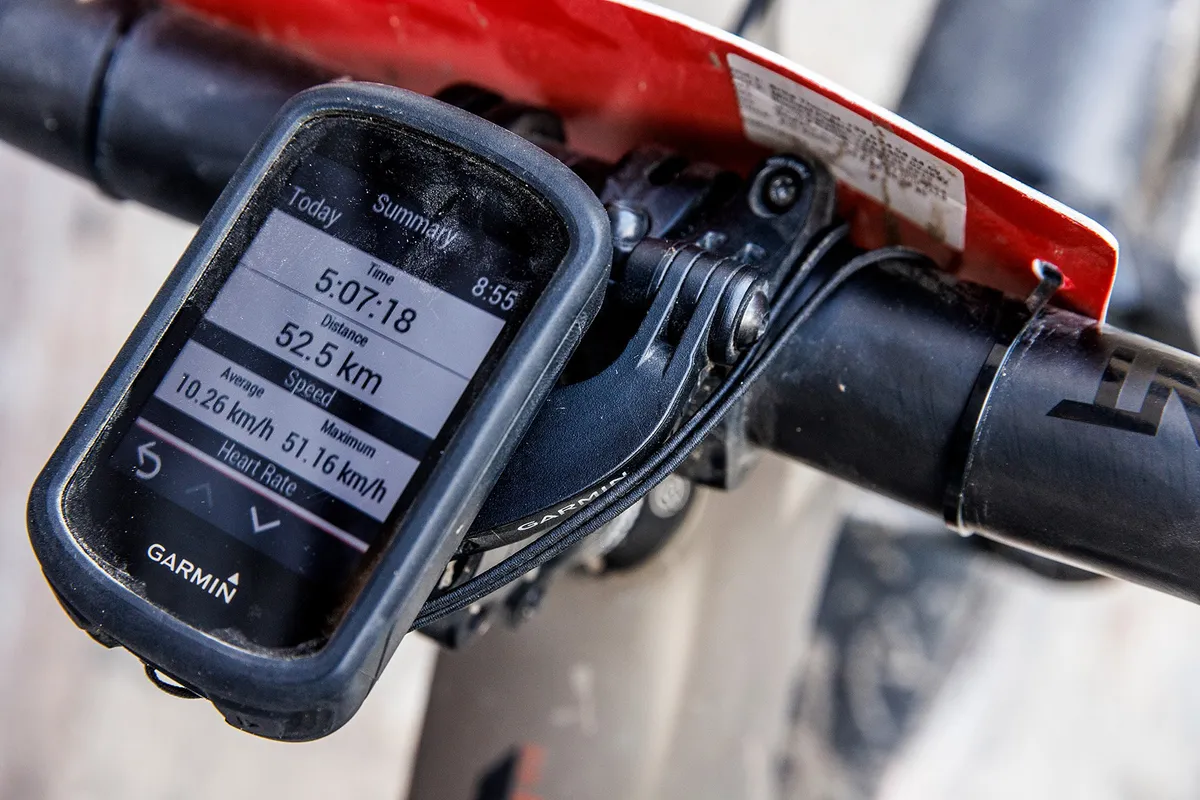
Opt for the mountain bike bundle and you get an off-road-specific mount, a silicone case for the computer and a remote, so you can operate it without taking your hands off the bar.
Garmin has recently done some housekeeping on its Edge range, discontinuing some older longstanding models, so you might not see some familiar names below.
We’ll start with the simplest, most affordable Garmin Edge computers, and work up from there.
Current Garmin Edge models
Garmin Edge 130 Plus
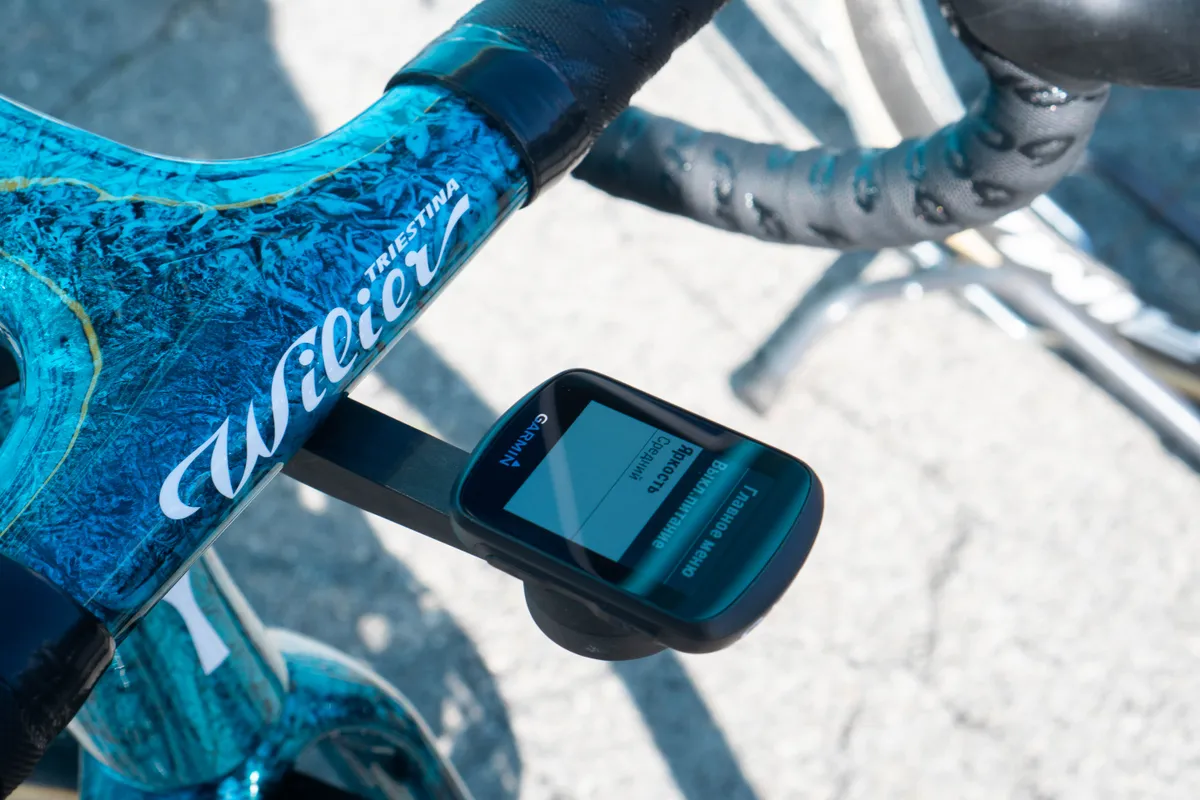
- Navigation: Basic, breadcrumb-style with no basemap
- Training data: Basic speed, distance, time, elevation, heart rate and power data field, mountain bike metrics and ClimbPro
- Connectivity: USB, ANT+, Bluetooth
- Compatibility: ANT+, Garmin Varia, Connect IQ
- Size: 40×62×17mm
- Screen: 27×36mm, black and white
- Price: £169.99 / $199.99 / €199.99 / AU$349
Garmin's most basic computer, the Edge 130 Plus has an accelerometer. This enables it to include mountain biking metrics and incident detection. ClimbPro shows the profile of a climb from a pre-loaded route.
There is no base mapping on the 130, so you're limited to breadcrumb mapping, but the screen resolution is sharp.
Battery life is just 12 hours, but that should be more than enough for most riders. The Edge 130 Plus can also control smart trainers.
- Best for: Riders who want a simple GPS with plenty of features, including mountain bike metrics
Garmin Edge Explore 2
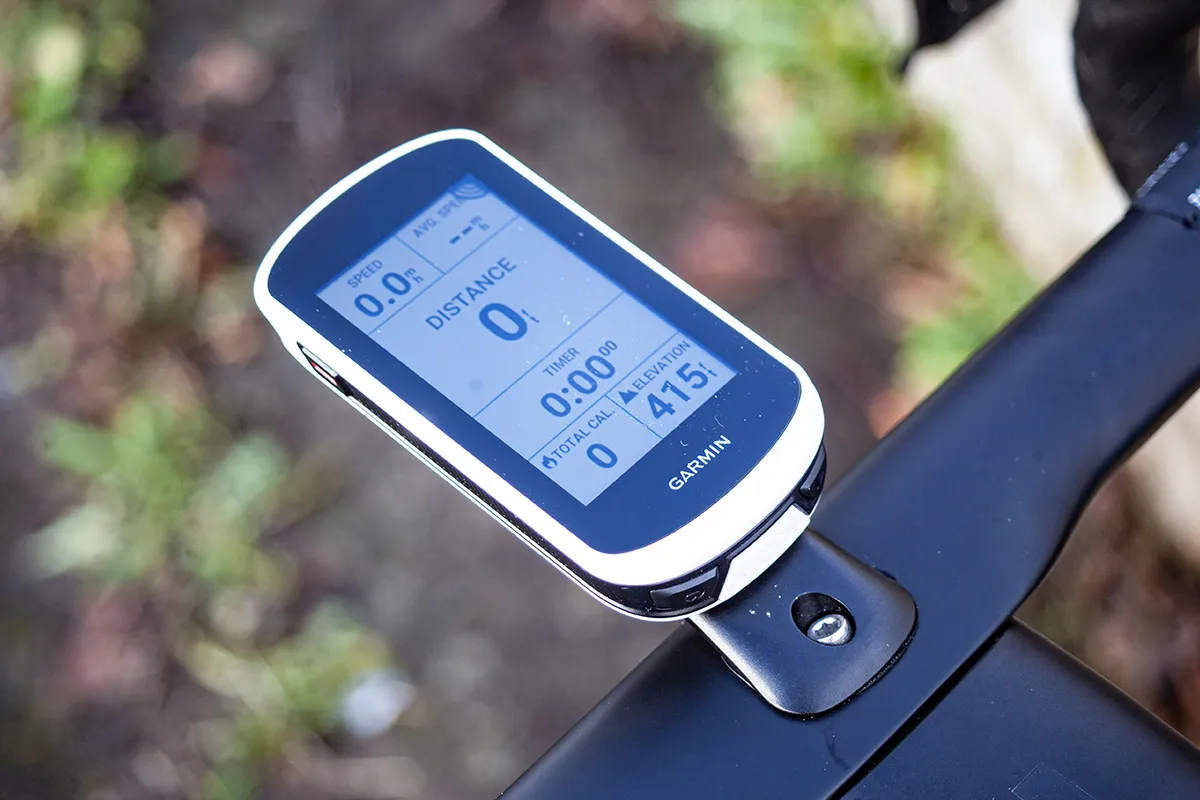
- Navigation: Excellent, thanks to trifold GPS, GLONASS and Galileo satellite input, this Garmin is adept at exploring; it can store 100 routes
- Training data: Speed, distance, time, ClimbPro, heart rate, power, but not advanced metrics such as left-right balance or training load
- Connectivity: USB-C, ANT+, Bluetooth
- Compatibility: ANT+, Garmin Varia, smart trainer and power meter
- Size: 106.1x55.7x20.6mm
- Screen: 3in, 240x400 pixels colour and touchscreen
- Price: £250 / $299 / €299 as tested
The Garmin Edge Explore 2 has better navigation features than some of Garmin's deluxe models at less than half the price. The screen is large, high-resolution and rerouting is reliable.
Connectivity options abound, but you lose out on the geekier training analysis, including pedalling efficiency, that its pricier Garmin brethren deliver. The live data the Edge Explore 2 does deliver will satisfy the majority of riders though.
Lacking WiFi connectivity, the Edge Explore 2 cannot directly upload your activities to Strava or other ride-sharing apps when you get home. Nor is it compatible with electronic groupsets.
- Pros: Easy to use; navigation works well; battery life
- Cons: Lacks data for some riders; no electronic groupset connectivity
Garmin Edge 530
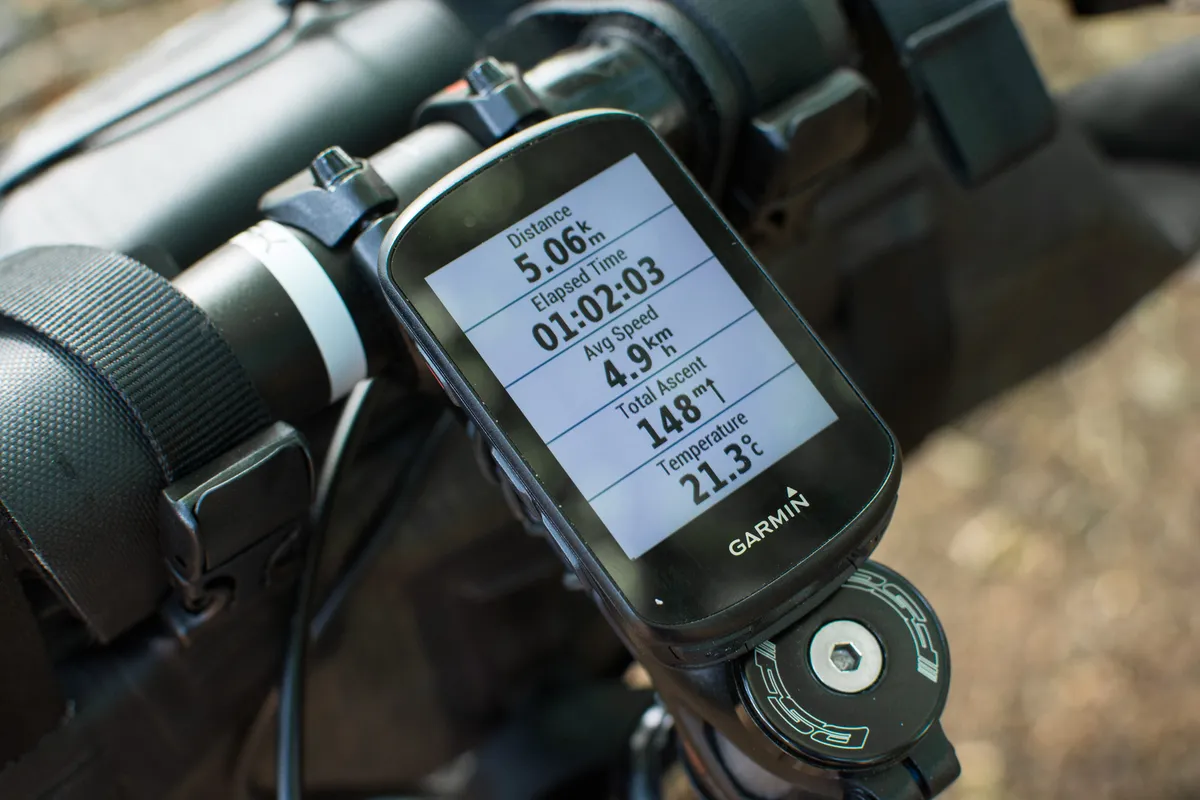
- Navigation: Good, aimed primarily at following courses created in advance, with excellent turn-by-turn instructions and hazard warnings. Non-touchscreen means browsing maps is mostly a waste of time
- Training data: Speed, altitude, power, heart rate, cadence, calories, gear selection (for electronic drivetrains), distance, time, temperature, navigation, performance monitoring and more
- Connectivity: USB, Bluetooth, BLE, WiFi
- Compatibility: ANT+ and ANT+ shifting, power meter and bike trainer, Shimano Di2, Vector power meter, Garmin Varia and VIRB
- Size: 85×51×16mm (20mm total including protruding mount)
- Screen: 38×51mm (2.6in diagonal), 246×322 pixel colour screen (non-touchscreen)
- Price: £259.99 / $299.99 / AU$499 as tested
The Garmin Edge 530 weighs 76g and has a slightly larger screen at 51x38mm, while battery life is a claimed 20 hours.
It provides training data such as effectiveness measures and VO2 max, as well as recovery time. The ClimbPro feature tells you how much further a climb goes on and how steep it gets ahead.
The Bike Alarm is also a nice security feature that tells you via your smartphone if the bike is moved while you’re away from it.
The Edge 530 was the first Garmin to receive WiFi connectivity, so you can exchange data wirelessly rather than needing to use a USB cable to connect to your computer.
- Pros: Lots of features; great battery life; for most riders arguably better value than the Edge 830
- Cons: Unintuitive menu structure; frustrating mapping interface
Garmin Edge 540 and Edge 540 Solar
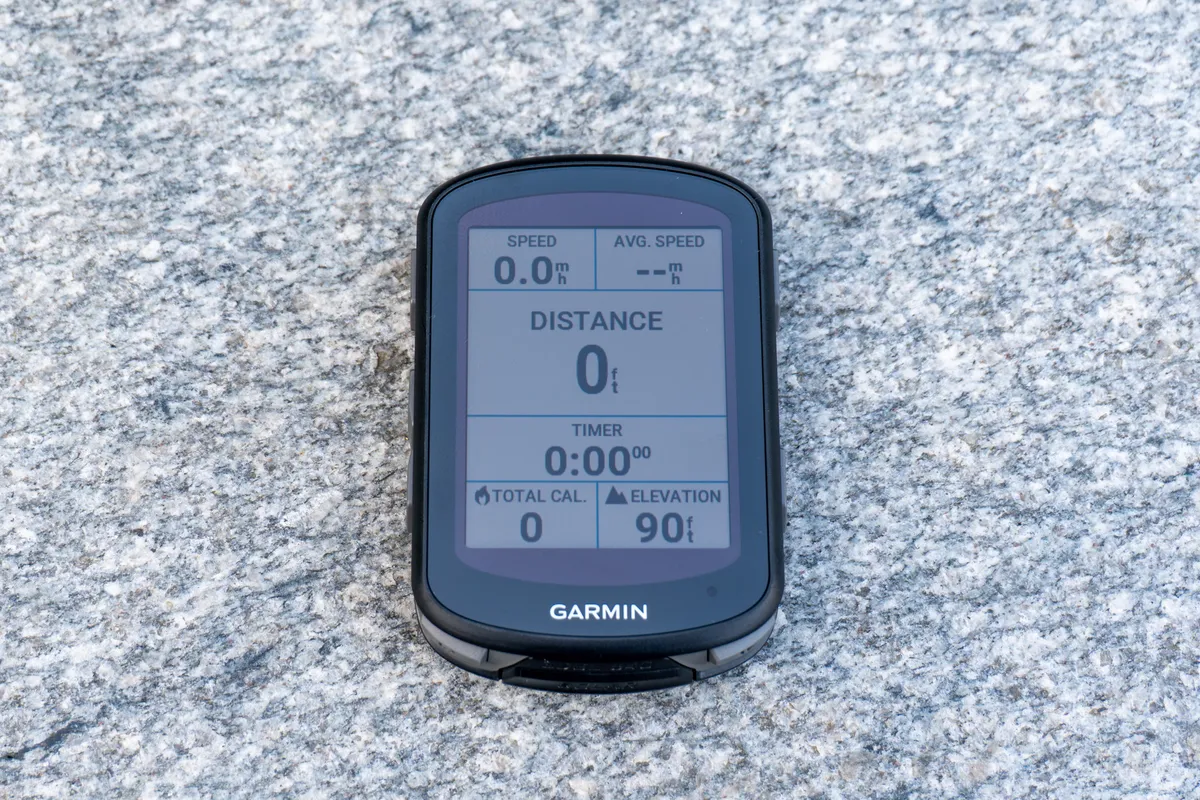
- Navigation: Multi-band GNSS technology is claimed to improve navigation
- Training data: Speed, altitude, power, heart rate, cadence, calories, gear selection (for electronic drivetrains), distance, time, temperature, performance monitoring
- Connectivity: USB-C, Bluetooth, ANT+, WiFi
- Compatibility: ANT+ shifting, power meter and smart trainer, heart rate monitor, Shimano Di2, Vector power meter, Garmin Varia and VIRB
- Size: 57.8x85.1x19.6 mm
- Screen: 2.6in (66 mm) diagonal, 246x322 pixels, colour non-touchscreen
- Price: Edge 540 £349.99 / $349 / €399.99 / AU$599, Edge 540 Solar £449.99 / $499 / €499.99 / AU$749
The Garmin Edge 540 Solar uses a PowerGlass screen to recharge from sunlight, bringing battery life to a claimed 32 hours when running GPS. The non-solar Edge 540 can manage 26 hours in GPS mode, according to Garmin.
Both Edge 540 bike computers garner the ClimbPro 2.0 feature, which doesn't require a loaded course to preview ascents. The mid-range device also uses USB-C charging – a feature Garmin was curiously slow to adopt.
It features some of Garmin's more sophisticated training tools, such as Targeted Adaptive Coaching, which suggests a training plan based on your goals and progress.
- Best for: Riders looking for sophisticated tech in a small package
Garmin Edge 830
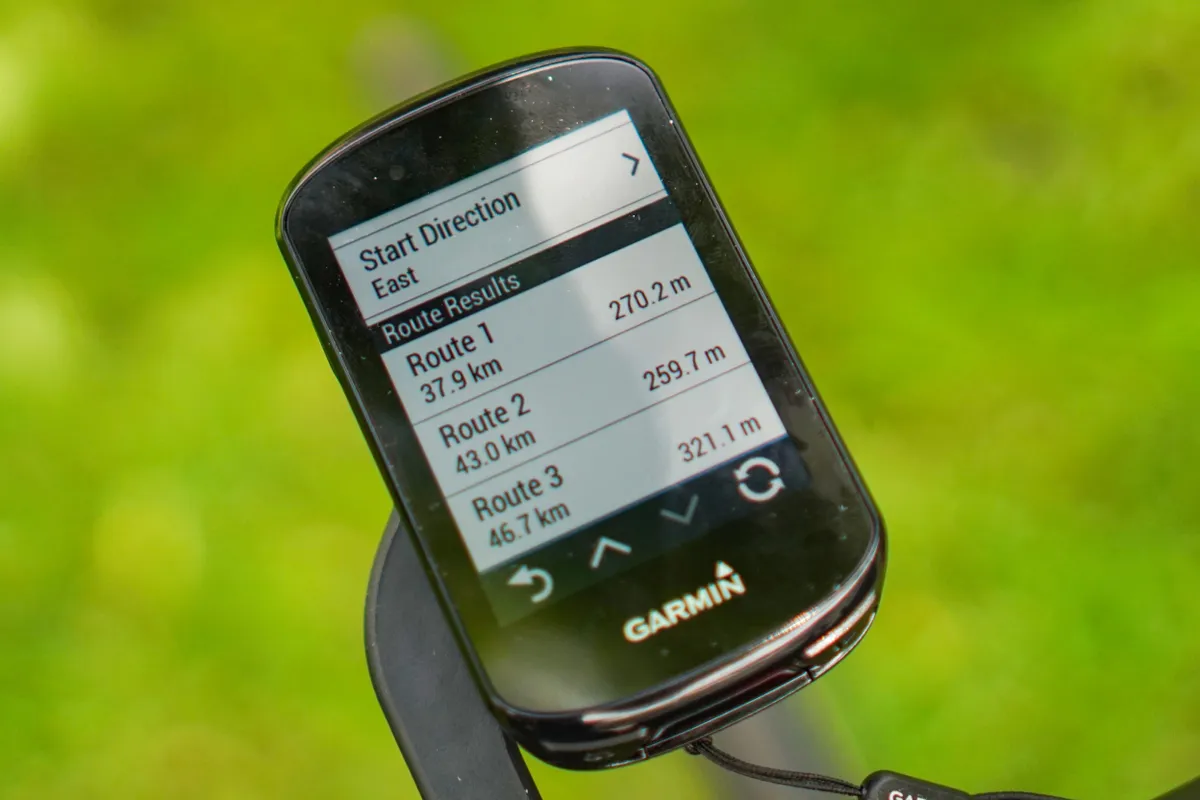
- Navigation: Good, maps and navigation features are easy to understand and it’s relatively simple to programme routes. On-device route calculation isn’t great, though
- Training data: Speed, altitude, power, heart rate, cadence, calories, gear selection (for electronic drivetrains), distance, time, temperature, navigation, performance monitoring and more
- Connectivity: USB, Bluetooth, BLE, WiFi
- Compatibility: ANT+ and ANT+ shifting, power meter and bike trainer, Shimano Di2, Vector power meter, Garmin Varia and VIRB
- Size: 48x74.5mm
- Screen: 50x82mm, 246x322 pixels, colour touchscreen
- Price: £349.99 / $399.99 / €399.99 / AU$599 as tested
The Garmin Edge 830 is the first model in the Edge range to get touchscreen control of its functions. It’s larger, but not a lot heavier, than the Edge 530 at 79g and with a larger 74x48mm colour touchscreen.
We also found it relatively easy to input a destination to the device, although route calculation isn’t great, despite its Trendline routing based on riders’ most popular roads and trails.
- Pros: Tons of features; comprehensive navigation and training metrics
- Cons: Route creator doesn't always choose the most sensible or appropriate routes
Garmin Edge 840 and Edge 840 Solar
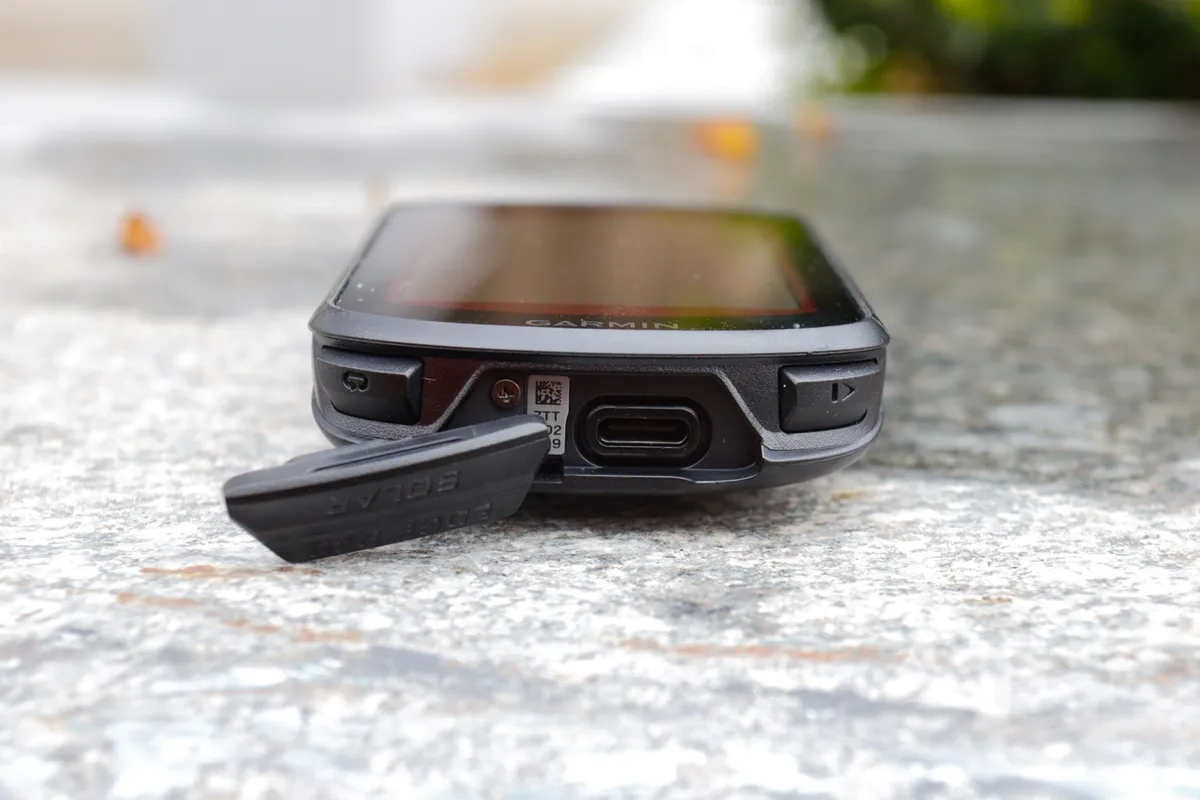
- Navigation: Multi-band GNSS technology is said to enhance navigation
- Training data: Speed, altitude, power, heart rate, cadence, calories, gear selection (for electronic drivetrains), distance, time, temperature, Adaptive Coaching, Power Guide, ClimbPro 2.0
- Connectivity: USB-C, Bluetooth, ANT+, WiFi
- Compatibility: ANT+ shifting, power meter and smart trainer, heart rate monitor, Shimano Di2, Vector power meter, Garmin Varia and VIRB
- Size: 57.8x85.1x19.6mm
- Screen: 2.6in (66mm) diagonal, 246x322 pixels, colour touchscreen
- Price: Edge 840 £449.99 / $499 / €499.99 / $749, Edge 840 Solar £519.99 / $599 / €599.99 / AU$879
Solar charging, multi-band GNSS navigation and AI-enabled training guidance make their way to the Garmin Edge 840. On both solar charging and standard versions, the screen is operated by touch and side buttons and cable charging is via USB-C.
The Garmin Edge 840 computers receive the second-generation of ClimbPro, which previews climbs without needing a loaded route, along with Power Guide and Live Stamina features.
The Garmin Edge 840 Solar impressed in testing, with its flawless mapping and brilliant touchscreen, but Liam Cahill queried its solar function in dim countries like the UK.
- Pros: Flawless mapping; touchscreen; compact dimensions; addition of GNSS
- Cons: High price; solar function limited in dimmer climates; buggy music controls
Garmin Edge 1030 Plus
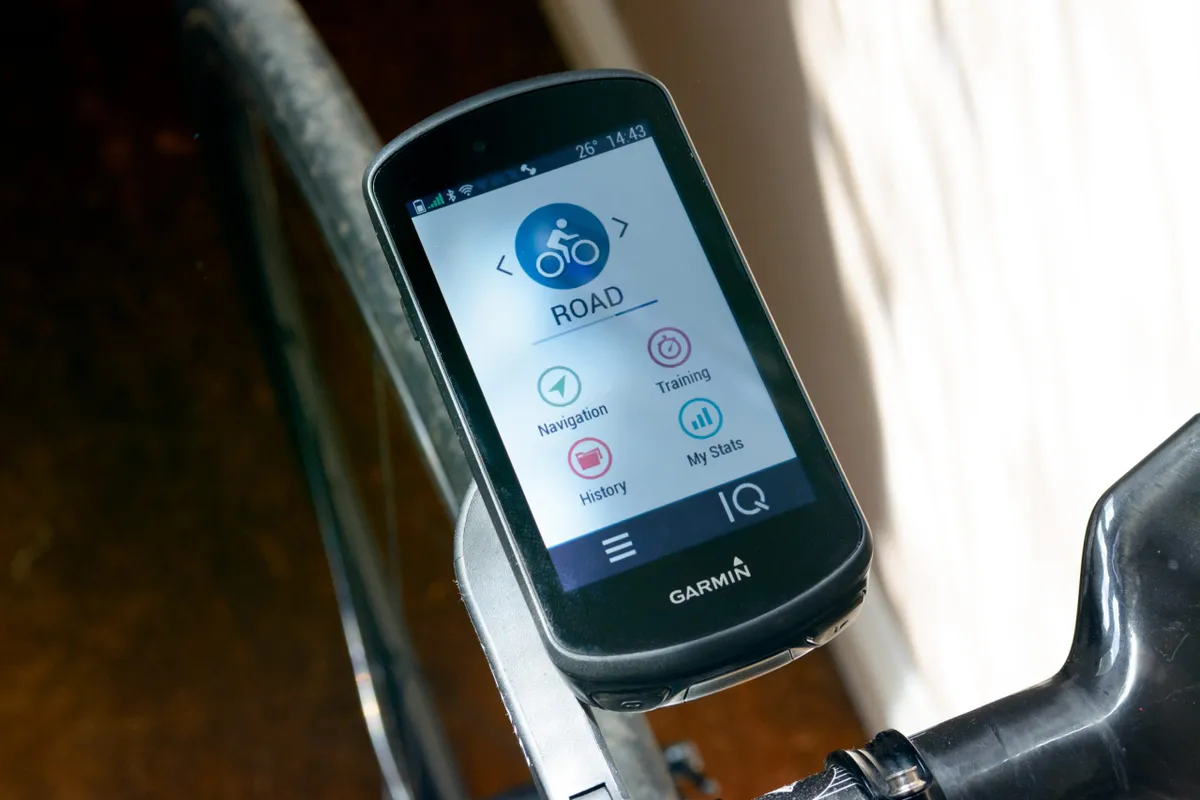
- Navigation: Even clearer than the 830, using a larger screen with the same updated processor for quicker route recalculation
- Training data: A bewildering number of training metrics that can be customised to your heart's content
- Connectivity: ANT+, Bluetooth, WiFi, USB
- Compatibility: ANT+, Shimano Di2, SRAM eTap, Campagnolo EPS, Garmin Varia
- Size: 59x114x19mm
- Screen: 3.5in/89mm colour touchscreen, 282x470 pixels
- Price: £519.99 / $599.99 / €599.99 / AU$999 as tested
Now superseded by the 1040 and 1050 range, the Edge 1030 Plus was the previous flagship model. It still gives you nearly every feature you could ever want in a bike computer.
Its functionality is very similar to the 830, but with a larger screen, increasing ease of navigation.
Battery life is said to be 24 hours, though this can be extended to 48 hours if you run the computer in a stripped-down mode.
- Pros: Responsive and bright touchscreen; battery life; mapping; customisable
- Cons: A large premium over the Edge 830 for little more; non-QWERTY keyboard; price
Garmin Edge 1040 and 1040 Solar
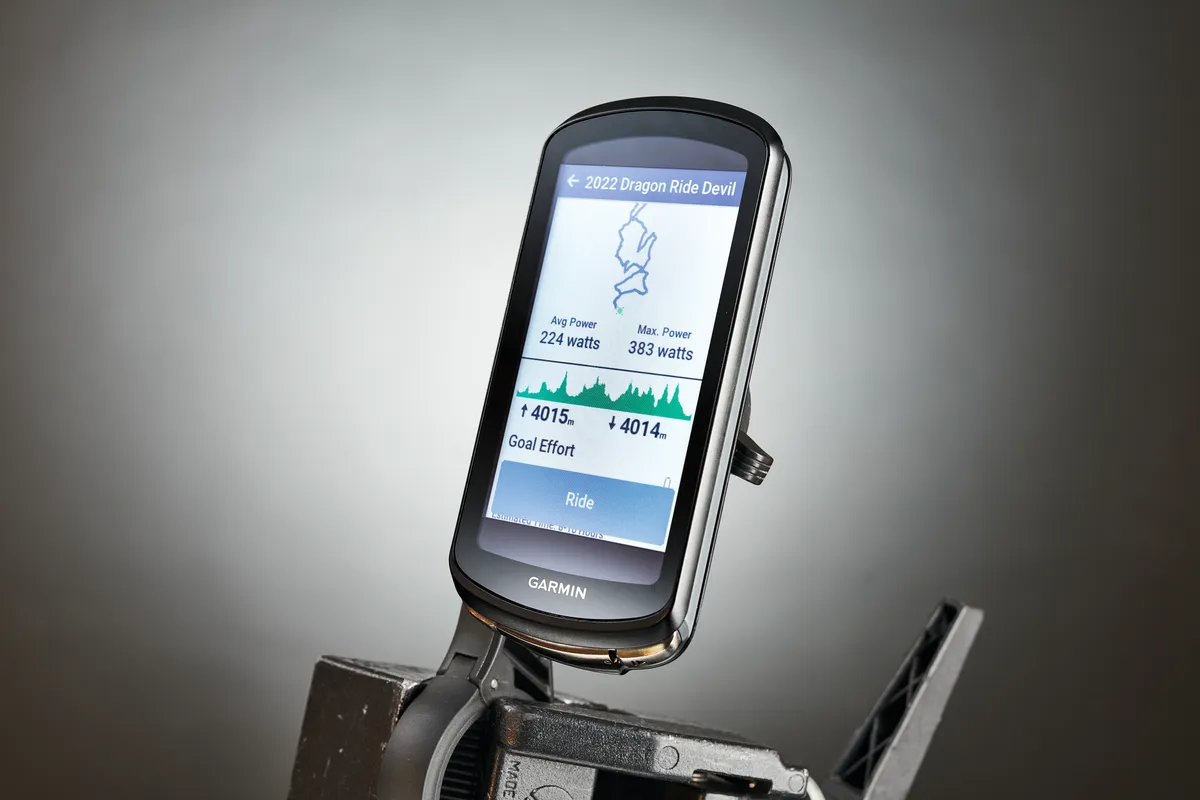
- Navigation: Every bit as good as the 1030 Plus with a faster processor for quicker route recalculation
- Training data: A bewildering number of training metrics that can be customised to your heart's content
- Connectivity: ANT+, Bluetooth, WiFi, USB-C
- Compatibility: ANT+, Shimano Di2, SRAM eTap, Campagnolo EPS, Garmin Varia
- Size: 59x118x20mm
- Screen: 3.5in/89mm colour touchscreen, 282x470 pixels
- Price (Garmin Edge 1040): £519.99 / $599.99 / €599.99 / AU$999.99
- Price (Garmin Edge 1040 Solar): £629.99 / $749.99 / €749.99 / AU$1,299 as tested
Second on the Garmin Edge tree, the Edge 1040 and 1040 Solar give you every feature you could ever want in a bike computer in the same overall format as the Edge 1030 Plus.
The 1040 Solar is said to run for up to 100 hours by recharging with sunlight on the go, using the same Power Glass technology as found on its top-end smartwatches.
Compared to the 1030 Plus, the 1040 is claimed to offer improved GPS and more data analytics while riding.
The ride settings on the 1040 models can be adjusted via the Garmin Connect app – a feature long requested by users.
- Pros: Large screen; solar charging; Garmin Connect integration
- Cons: Takes up a lot of handlebar real estate; can be difficult to read in sunlight
Garmin Edge 1050

- Navigation: Updated on-device route planning and easy toggling between overlays
- Training data: More training metrics than you will ever know what to do with
- Connectivity: ANT+, Bluetooth, WiFi, USB-C
- Compatibility: ANT+, Shimano Di2, SRAM eTap, Campagnolo EPS, Garmin Varia
- Size: 60.2x118.5x16.3mm
- Screen: 3.5in/89mm colour touchscreen, 480x800 pixels
- Price: £649.99 / $699.99 / €699.99 / AU$TBA
At the top of the tree, the new Edge 1050 is claimed to be Garmin's “brightest and smartest” bike computer yet.
With nearly double the resolution of the 1040, the biggest upgrade is to the screen, although this comes at the cost of battery life, which drops to a still chunky 20 hours for the 1050.
Other new features include in-ride hazard alerts, leaderboards and “witty post-ride awards”.
Curiously, no solar charging version is available yet.
- Best for: Dedicated cyclists who want every metric under the sun (but can do without solar charging)
What can a Garmin GPS computer do?
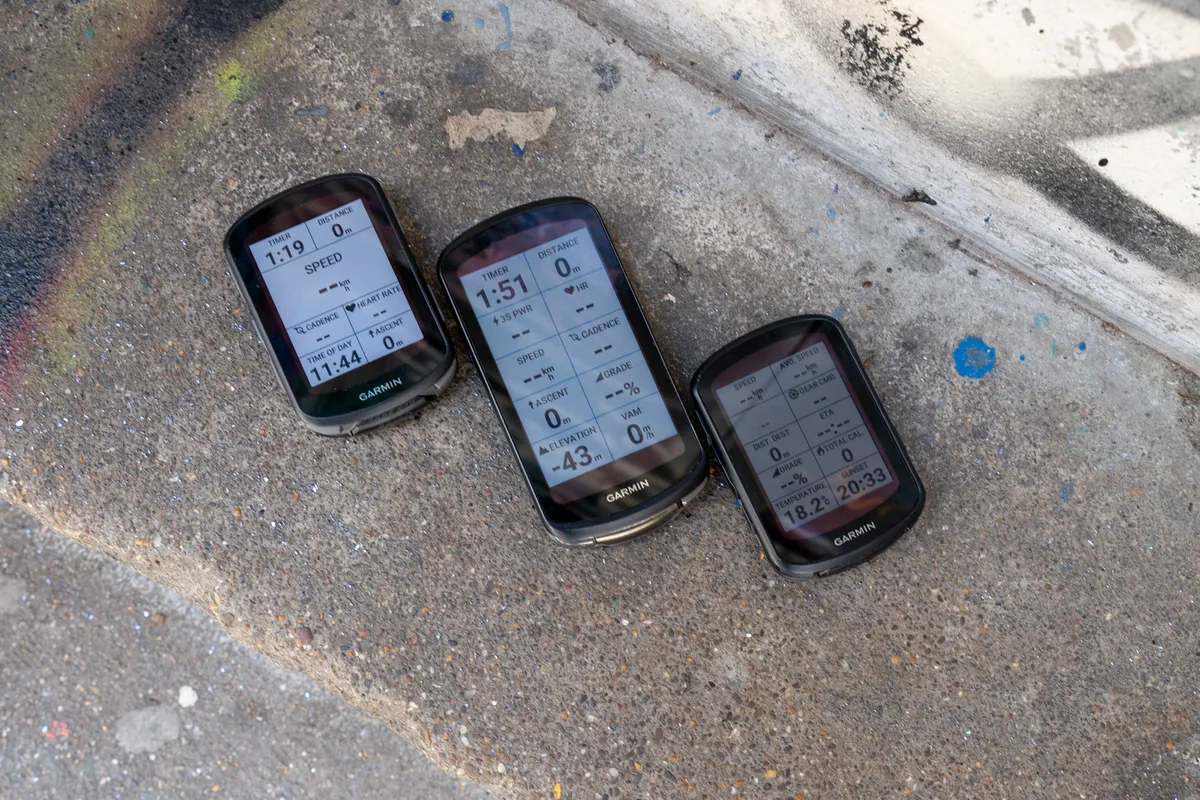
At a bare minimum, Garmin bike computer use GPS tracking to log where you’ve been, how far and how fast.
They get position data from the GLONASS, Galileo and standard GPS satellite constellations.
That basic data can be augmented with a raft of extras.
Most computers will give you mapping, enabling you to plan and follow a route, with turn-by-turn navigation. Their ability to re-route if you willingly or unwillingly go off track has greatly improved.
Cheaper models have just a breadcrumb trail that doesn’t superimpose your route on a base map.
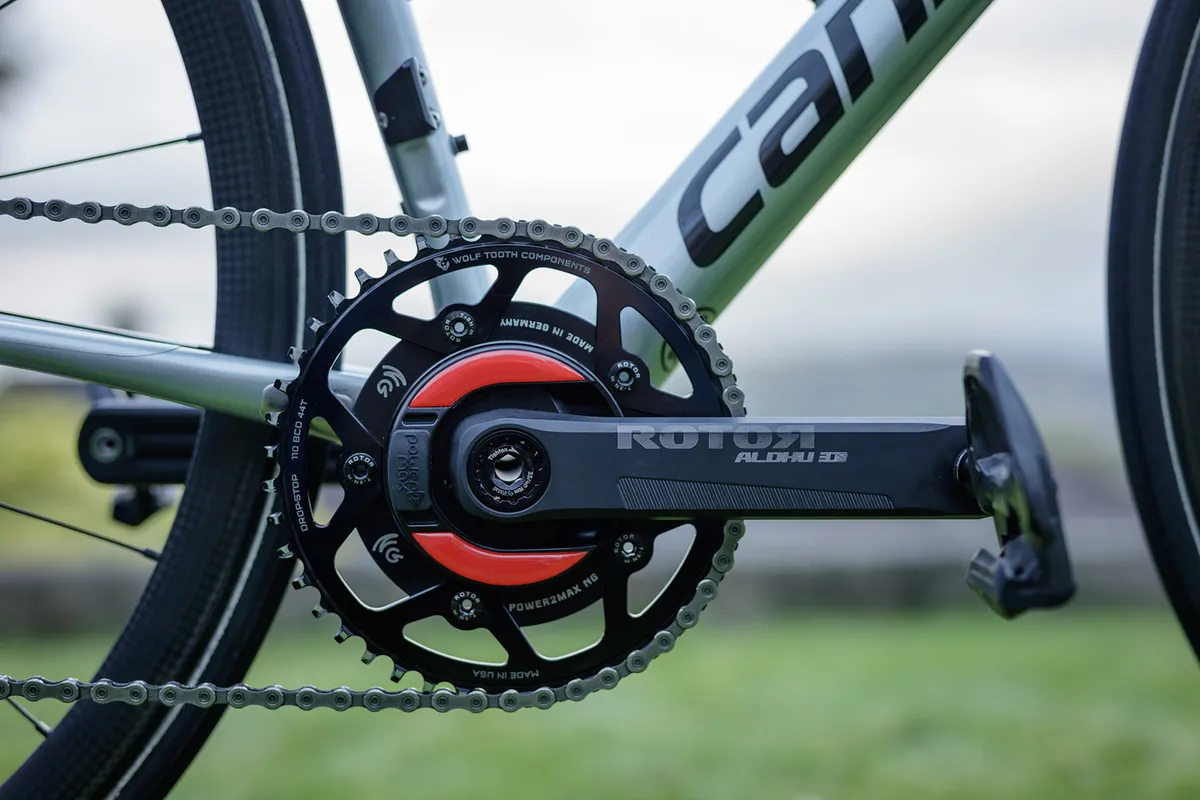
You can also pair your computer wirelessly with peripheral devices such as a heart rate monitor strap, speed and cadence sensors and a power meter to get more information on your performance.
Entry-level Edge models are controlled using buttons on the sides of the unit, whereas more expensive ones include a touchscreen.
The screen gets larger and sharper as you move up the range too, and goes from black-and-white to a colour display.
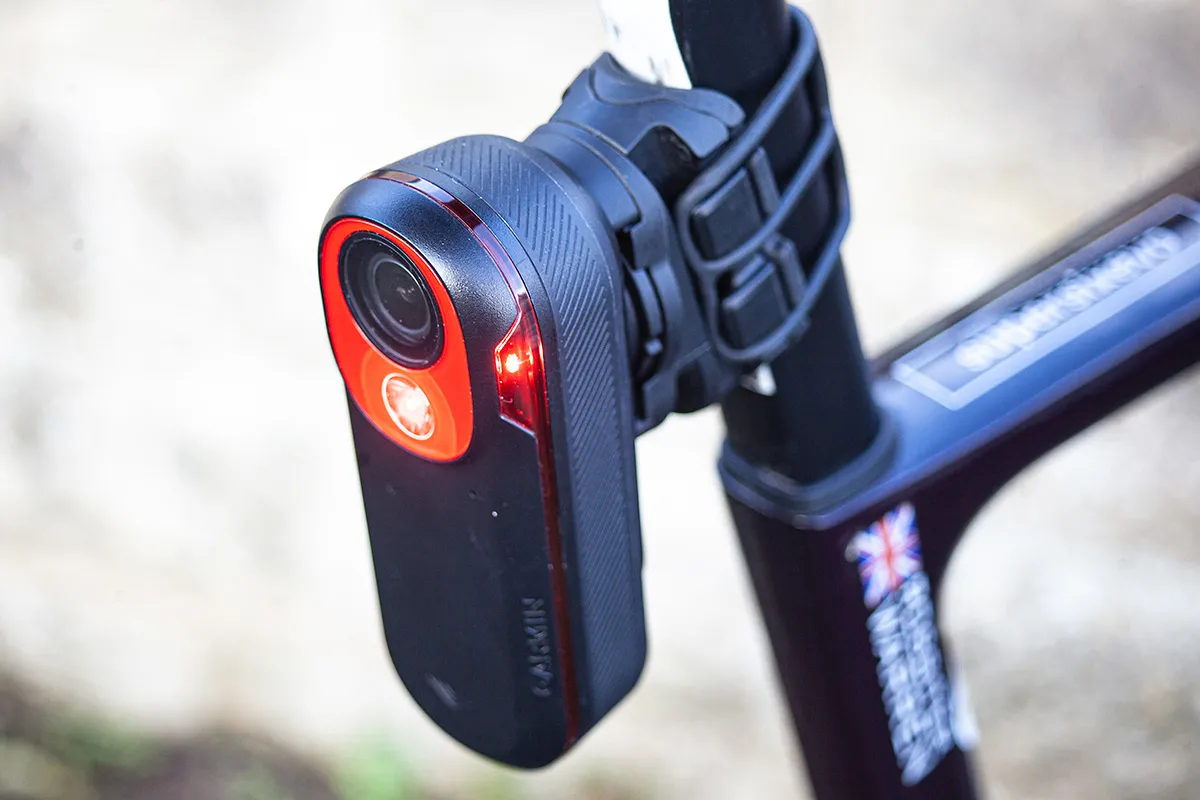
All Garmin Edge computers enable you to control Garmin’s Varia front and rearview radar lights, with the rear-facing units using radar to alert you via your computer of approaching vehicles.
The computers link to the Garmin Connect web or smartphone app, where you can view and analyse your data and plan routes.
The smartphone app enables you to pair your Edge to your mobile, and they will 'talk' to one another, with the computer showing you notifications of incoming calls and texts. The app can also share your position and other metrics with other riders and family at home.
Free-to-download apps in Connect IQ store enable you to personalise your Edge with, for example, a wind direction indicator. Integration with route planning and tracking apps, such as Strava or Komoot, are also available.
Discontinued Garmin Edge bike computer models
Here’s a full list of discontinued Garmn Edge models as of June 2024:
- Garmin Edge 20 review
- Garmin Edge 25 review
- Garmin Edge 130 review
- Garmin Edge 200 review
- Garmin Edge 205
- Garmin Edge 305 review
- Garmin Edge 500 review
- Garmin Edge 510 review
- Garmin Edge 520 review
- Garmin Edge 520 Plus review
- Garmin Edge 605
- Garmin Edge 705 review
- Garmin Edge 800 review
- Garmin Edge 810 review
- Garmin Edge 820 review
- Garmin Edge Explore 820 review
- Garmin Edge 1000 review
- Garmin Edge Explore 1000 review
- Garmin Edge 1030 review
- Garmin Edge 1040 Solar review
Are there other options to consider?

Whereas five years ago, a bike computer was a Garmin, there are now alternatives. It's not all about Wahoo vs Garmin either.
Some of the best bike computers we've recently reviewed come from rivals to the big two. For example, we rated the Hammerhead Karoo 2 as highly as the Garmin Edge 1040 Solar and it costs half as much (though note its been superseded by the Karoo 3). For even less money, consider the high-scoring Sigma ROX 11.1 Evo.
You can also get a lot of the functionality of a bike computer in a GPS watch/smartwatch, with more versatility if you’re into other sports besides cycling.
Garmin has a comprehensive range, but other quality options we've tested include the Coros Pace 2 and Polar Ignite GPS fitness smartwatch.
